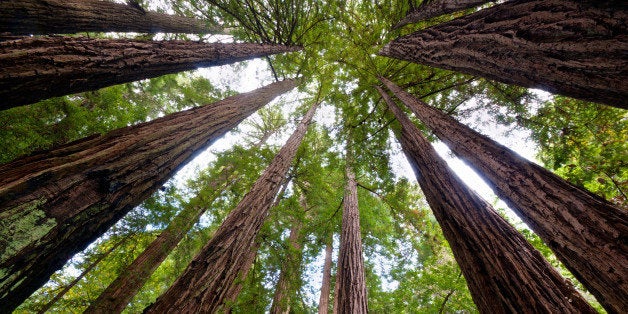
A study released Wednesday on the effect of climate change on old-growth redwood forests revealed a surprising silver lining: not only have the trees thrived as the temperature has risen, but they may also be an unparalleled tool in fighting global warming.
The Redwoods and Climate Change Initiative, a multiyear research study by UC Berkeley, Humboldt State University and Save the Redwoods League, examined the tree rings of coast redwoods in Northern California, providing the most comprehensive redwood chronology available today.
Researchers found that the trees have experienced an unprecedented growth spurt in recent decades, and that redwood forests can store up to three times more carbon than non-redwood forests worldwide.
"Not only are the trees growing quickly, but they are sequestering that carbon into wood," said Emily Burns, Director of Science for Save the Redwoods League.
According to researchers, the results mean that redwoods may not only survive climate change, but they could be one of our greatest natural defenses against increasing levels of atmospheric carbon.
"The redwoods' ability for carbon storage is the big message here," Richard Campbell, Conservation Science Manager at Save the Redwoods, told The Huffington Post. "It's not so much what effect climate change has on these trees, but rather the effect these trees have on climate change."
Campbell warned that the results certainly didn't provide a silver bullet for fighting climate change, but they emphasized the importance of protecting old-growth redwood forests.
"If anything, this gives us even greater incentive for forest conservation," he said.
Researchers took samples from more than 70 trees going back to the year 328 and found that, in the past few decades, trees have added record-breaking wood growth and girth. The fastest growing tree researchers discovered was adding 1.6 cubic meters of wood per year.
"That's the equivalent of this tree making 3.2 million pencils every year for the last decade," said Burns. "And that's just one tree."
The study also found that the worst year for the redwoods was 1580.
"That was a year that Sir Francis Drake reported having ice on his sails as he sailed along the coast of California," said Burns. "So we're beginning to tease apart what conditions lead to tremendous growing conditions for redwoods and which ones are more detrimental."
While the timing of the growth spurt is suggestive, researchers warned that the cause of is still unclear.
While the accelerated growth could have been a result of a longer growing season due to climate change, it could also be the result of decreased pollution or increased efforts for fire suppression, they said.
"We really do not know," lead researcher Stephen Sillett of Humboldt State University told the Los Angeles Times. "What we can say is…it's not like a doom and gloom scenario by any means."
It is also unclear how long the growth spurt will continue.
"What we're really wondering is, how long can it be sustained?" UC Berkeley researcher Todd Dawson told KQED. "As climates get warmer and potentially as snowpack declines and precipitation changes, are we going to hit some sort of a tipping point where all of the sudden new growth begins to decline and trees begin to decline?"
"It's clear that we have more work to do [...] but these results bolster our mission to protect redwoods," said Burns. "We predict these ancient forests will stay vibrant habitat refuges for other plants and animals in the foreseeable future."